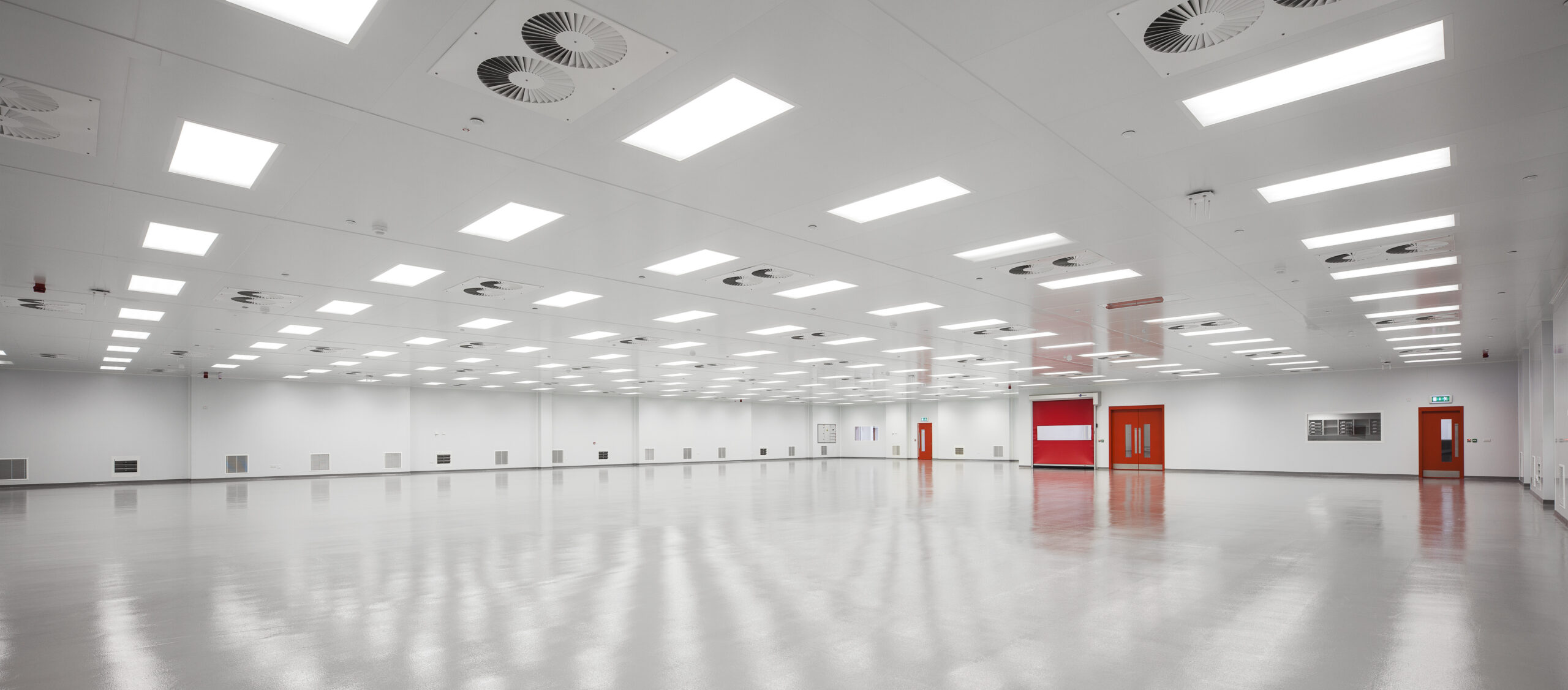Gigafactories are large-scale manufacturing facilities and are typically associated with the production of electric vehicle (EV) batteries.
These factories are responsible for producing millions of batteries each year, which are then used to power EVs. However, the manufacturing process for batteries is highly sensitive and requires a controlled environment to ensure the highest quality and reliability of the batteries being produced. This is where the architectural envelope, specifically the dry rooms, play a crucial role.
Importance of dry rooms and controlled environments
Batteries are highly sensitive to moisture, and exposure to even small amounts of moisture can have damaging effects. Moisture can lead to chemical reactions, corrosion, and a reduction in battery performance and lifespan. In addition, particle contamination in the manufacturing process can cause short circuits in the battery, further compromising its performance and safety.
To mitigate these risks, gigafactories have dry rooms that are crucial to ensuring the quality and reliability of the batteries being manufactured. These dry rooms provide a controlled environment with low humidity levels, minimising the risk of moisture-related issues. The dry rooms also help to prevent particle contamination by maintaining clean and controlled conditions throughout the manufacturing process.
The importance of the architectural envelope, specifically the dry rooms, in protecting the manufacturing process in gigafactories cannot be overstated. Failure to maintain the required environmental conditions can result in performance degradation, safety hazards, corrosion, and reduced lifespan of the batteries.
Performance degradation is a major concern, as it can lead to electrochemical reactions or create short circuits within the battery cells. This can result in reduced energy storage capacity, decreased power output, and overall performance degradation of the battery. Such issues can have a significant impact on the efficiency and effectiveness of EVs.
Furthermore, safety hazards are a major concern in gigafactories. Exposure to moisture increases the chances of thermal runaway or battery fires, which can have catastrophic consequences. By ensuring a compliant dry room, the risk of such safety hazards is minimised, providing a safer working environment for employees and protecting the factory and its assets.
Product Solutions
To ensure the effectiveness of the architectural envelope in gigafactories, secondary steel assistance is crucial. Collaborative workshops, quantifying steel for clean room systems, and detailing secondary steel supports for doors, roller shutters, and conveyor belt hatches are all essential elements of the process. Value engineering proposals and discussions about system parameters are also necessary to ensure that the architectural envelope meets the specific requirements.
In terms of the internal walls, safety and security sandwich panel performance is critical. These panels should have fire resistance properties, with spans of up to 7.5m or even 10m depending on the specific needs of the project. Steel face, stone wool core sandwich panels with sealed interlocking joints provide the necessary fire resistance and can be tested at independent UKAS labs. Specific testing for vertically laid panels can also be conducted to ensure the highest level of safety and security.
Conclusion
In conclusion, the architectural envelope, particularly the dry rooms, plays a crucial role in protecting the process in gigafactories. By maintaining low humidity levels, preventing particle contamination, and ensuring the highest level of safety and security, the architectural envelope helps to ensure the quality and reliability of the batteries being manufactured. This, in turn, contributes to the efficiency and effectiveness of EVs and the overall growth of the clean energy industry.





